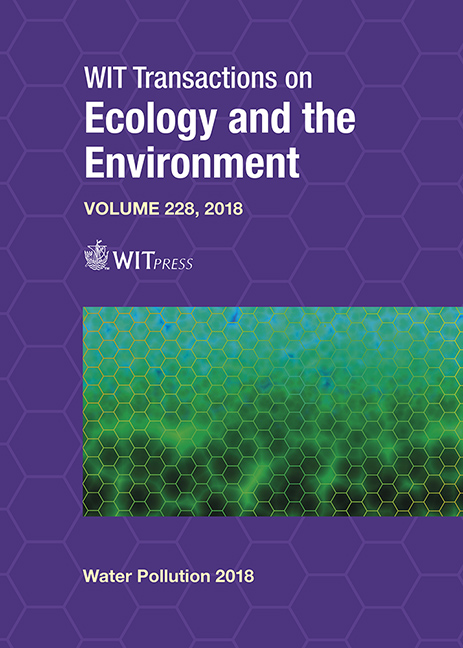THE IMPORTANCE OF CONSIDERING POLLUTION ALONG THE COAST FROM HEAVILY MODIFIED WATER BODIES UNDER THE WATER FRAMEWORK DIRECTIVE
Price
Free (open access)
Transaction
Volume
228
Pages
10
Page Range
307 - 316
Published
2018
Size
291 kb
Paper DOI
10.2495/WP180291
Copyright
WIT Press
Author(s)
REGINA TEMINO-BOES, INMACULADA ROMERO, REMEDIOS MARTINEZ-GUIJARRO, MARIA PACHÉS
Abstract
The European Water Framework Directive aims to achieve a good status of all inland and coastal waters in the European Union by evaluating the status and the anthropogenic pressures to natural water bodies. As such, several techniques have been developed to evaluate the anthropogenic pressure to coastal areas. The most widespread methods are indexes, although some authors have also used the application of models. Using indexes has many advantages, such as the simplicity or the fast application. The anthropogenic pressure is generally assessed through the application of an index which is calculated based on parameters such as population density, urbanization, industry, agriculture, fisheries and maritime transport. However, the dispersion of contaminants along the coast is a factor that is generally overlooked by such indexes. Natural coastal waters have been widely assessed in Member States. On the contrary, heavily modified coastal waters, which are generally located close to the biggest urban areas, have been left aside in the evaluation process. To demonstrate that minimizing pollution in heavily modified coastal waters is a must, we evaluated several nutrient concentrations in natural coastal waters of the Jucar River Basin District, located in the Western Mediterranean Sea (Spain). We calculated the correlation between nutrient concentrations and several anthropogenic pressures, including the presence of adjacent water bodies considered as heavily modified by human activity under the Water Framework Directive. Then, a forward stepwise linear regression was applied to identify the activities most affecting nutrient concentrations. It was found that the presence of a neighbouring water body classified as heavily modified was the main driver of nutrient concentration differences among natural water bodies. These results suggest that the evaluation of anthropogenic pressures to coastal waters should also consider the dispersion of pollutants from adjacent heavily modified coastal waters.
Keywords
coastal waters, diffusion, heavily modified water bodies, nutrients, Water Framework Directive





